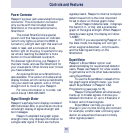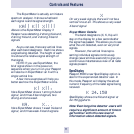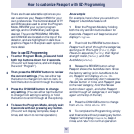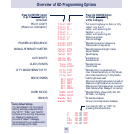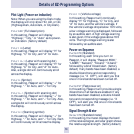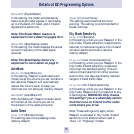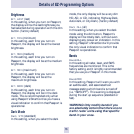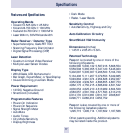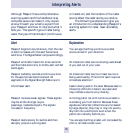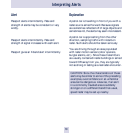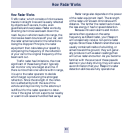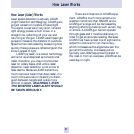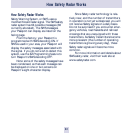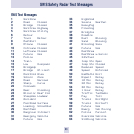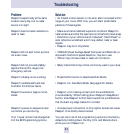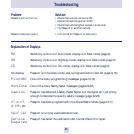
Interpreting Alerts
18
Although Passport has a comprehensive
warning system and this handbook is as
complete as we can make it, only experi-
ence will teach you what to expect from
your Passport and how to interpret what it
tells you. The specific type of radar being
used, the type of transmission (continuous
or instant-on) and the location of the radar
source affect the radar alerts you receive.
The following examples will give you
an introduction to understanding Passport’s
warning system for radar, laser and safety
alerts.
Explanation
You are approaching a continuous radar
source aimed in your direction.
An instant-on radar source is being used ahead
of you and out of your view.
An instant-on radar source or laser source is
being used nearby. This kind of alert requires
immediate attention!
Laser is being used in the area. Because laser is
inherently difficult to detect, any laser alert
may indicate a source very close by.
A moving patrol car with continuous radar is
overtaking you from behind. Because these
signals are reflected (reflections are increased
by large objects), they may or may not eventu-
ally melt into a solid point even when the
patrol car is directly behind you.
You are approaching a radar unit concealed by
a hill or an obstructed curve.
Alert
Passport begins to sound slowly, then the rate
of alert increases until the alert becomes a
solid tone. The Signal Meter ramps accordingly.
Passport emits short alerts for a few seconds
and then falls silent only to briefly alert and fall
silent again.
Passport suddenly sounds a continuous tone
for the appropriate band received. All
segments in the Signal Strength Meter are lit.
A brief laser alert.
Passport receives weak signals. These signals
may be a little stronger as you
pass large, roadside objects. The signals
increase in frequency.
Passport alerts slowly for awhile and then
abruptly jumps to a strong alert.



